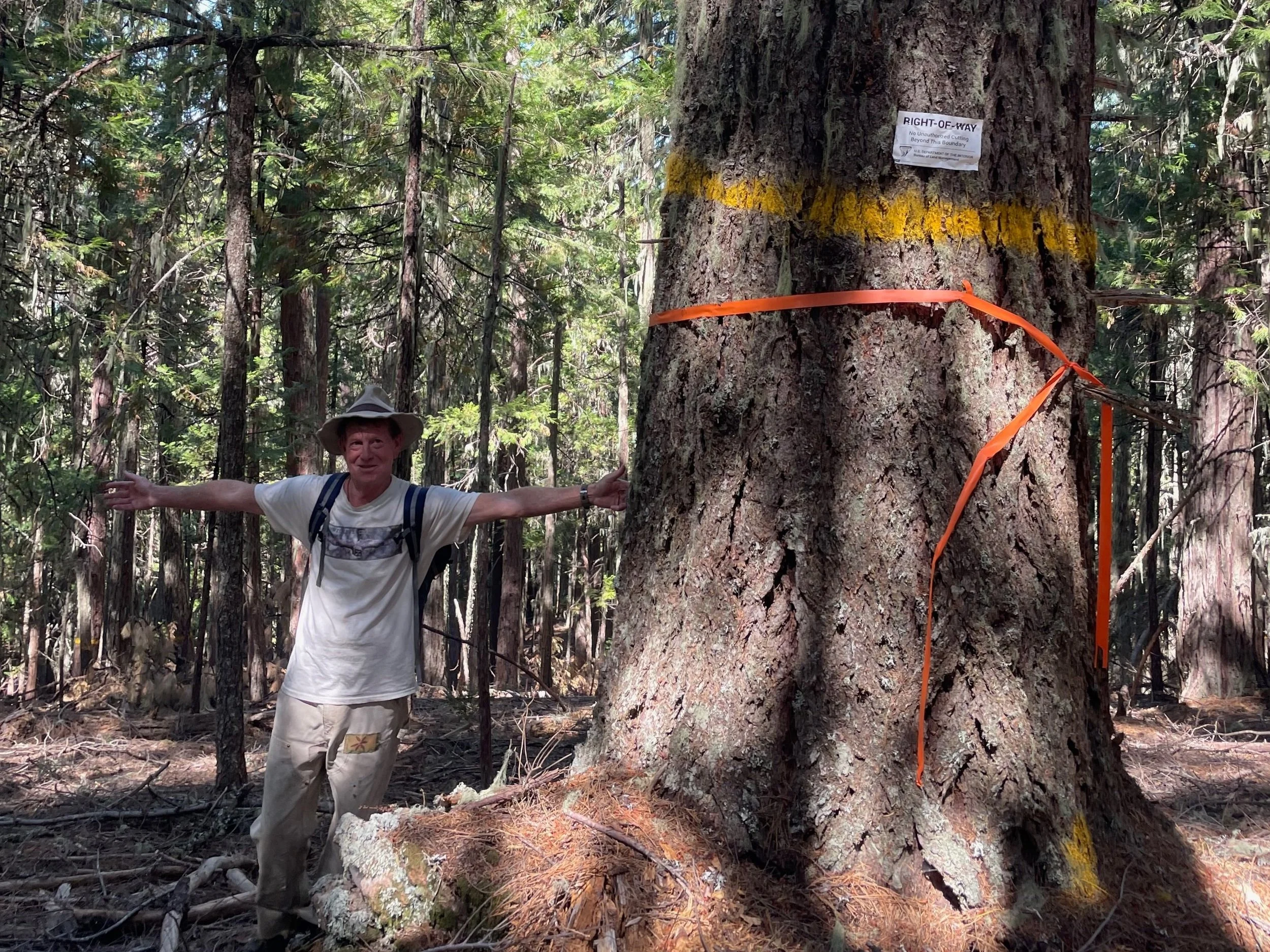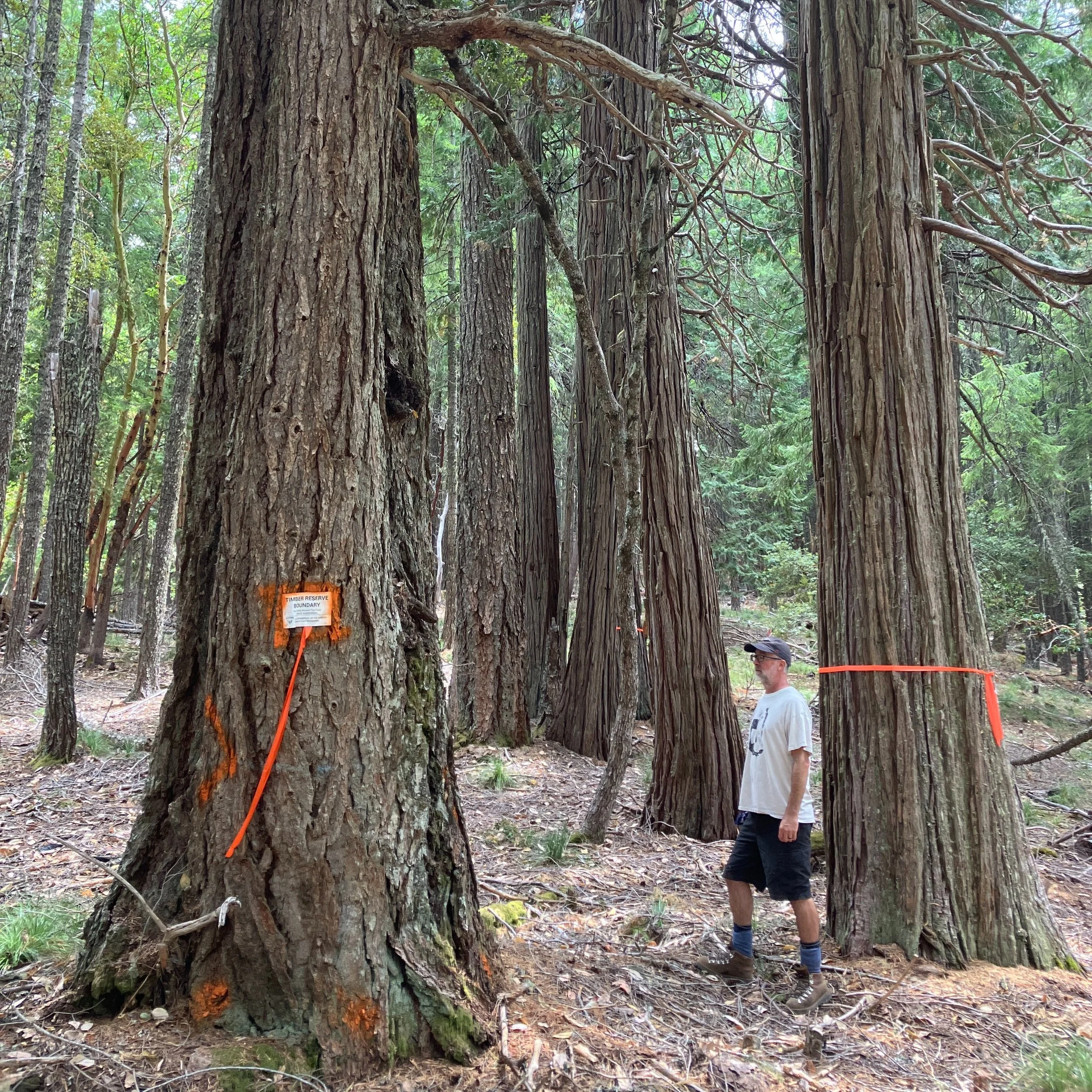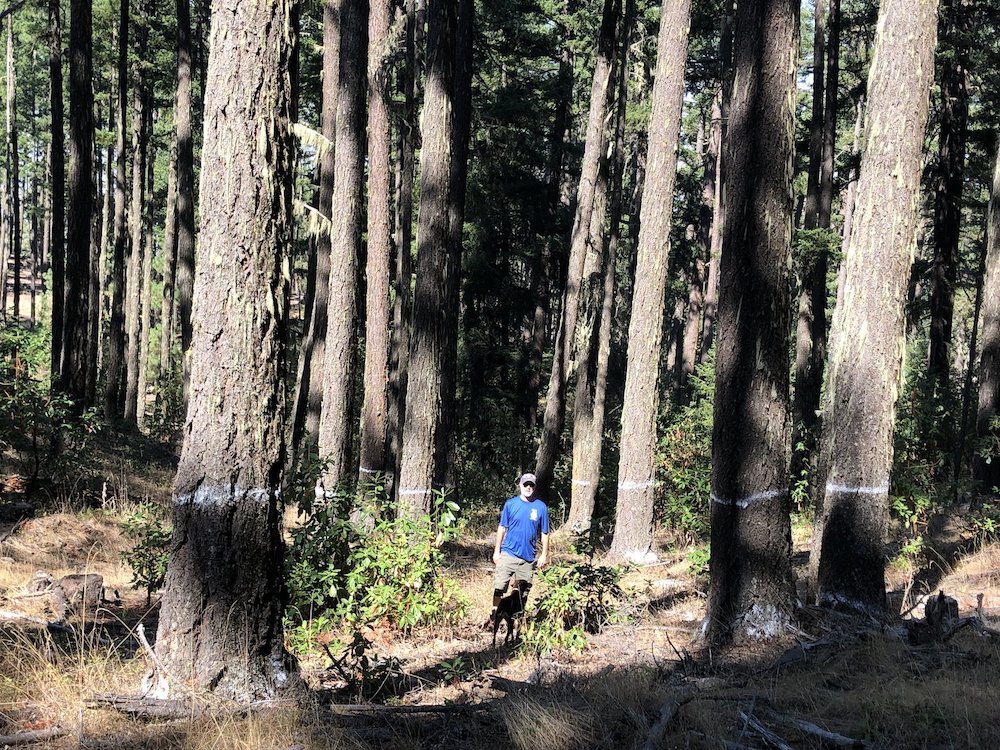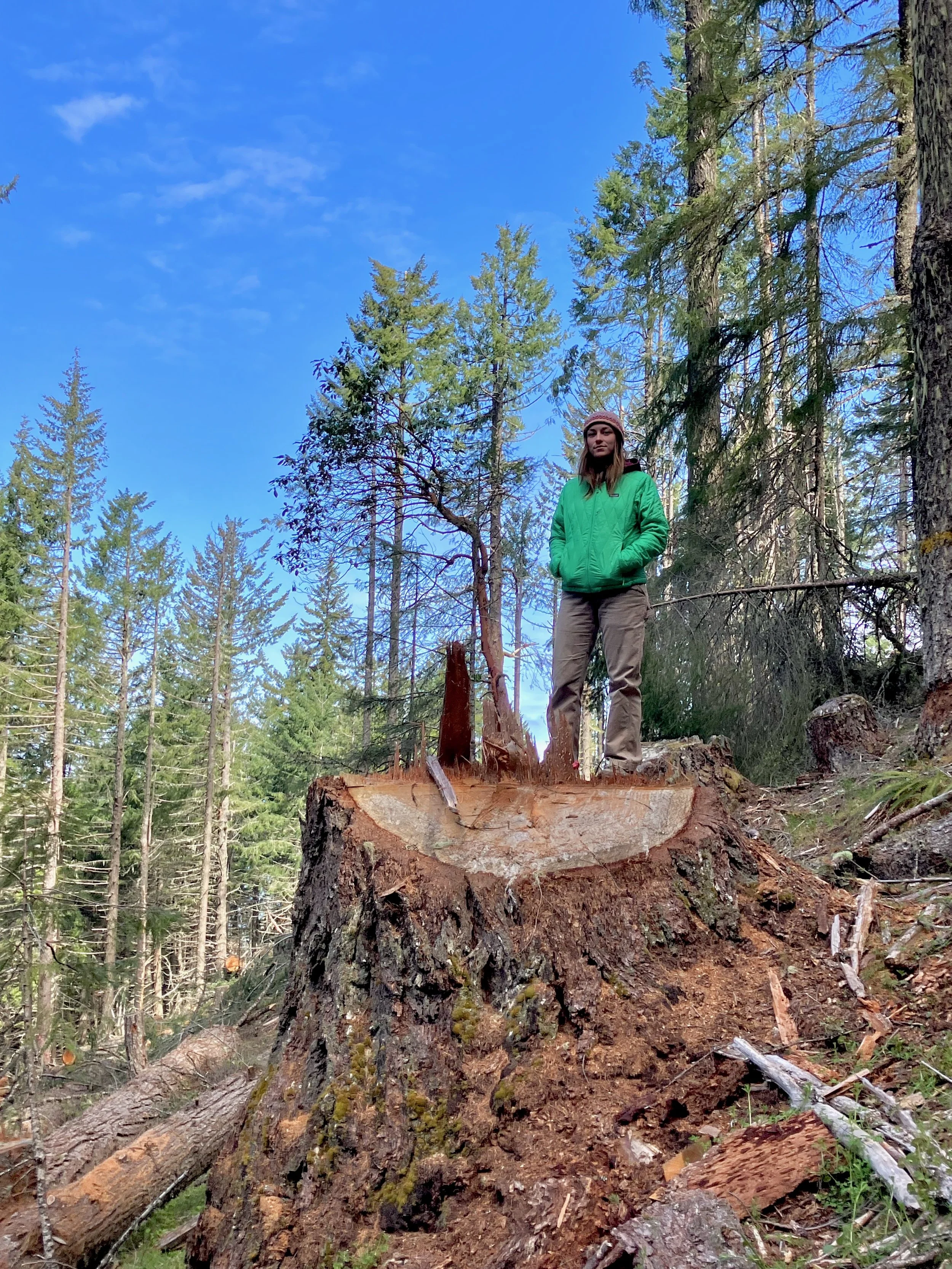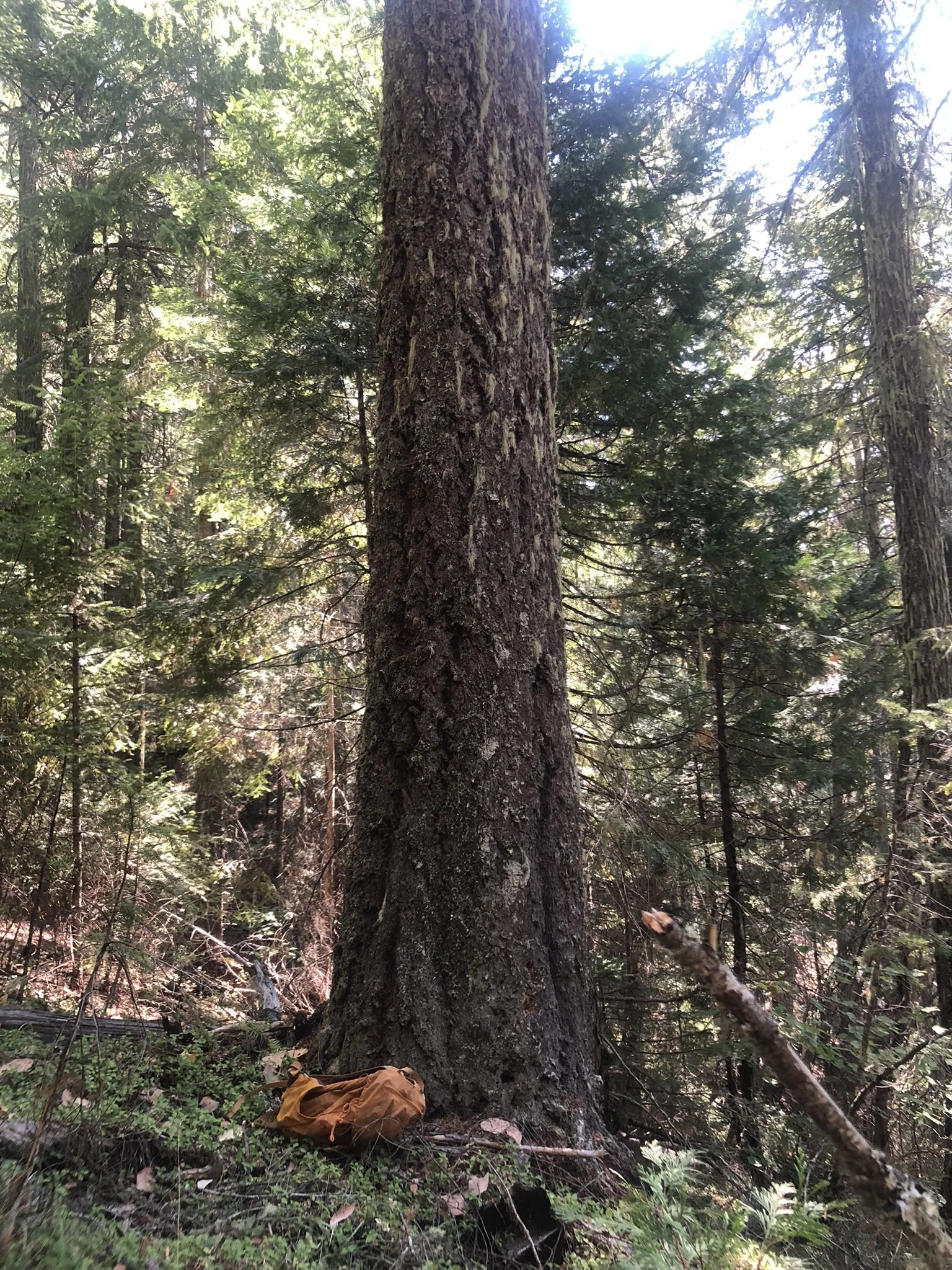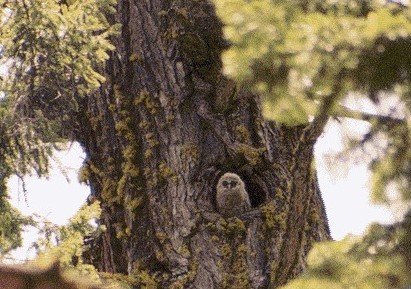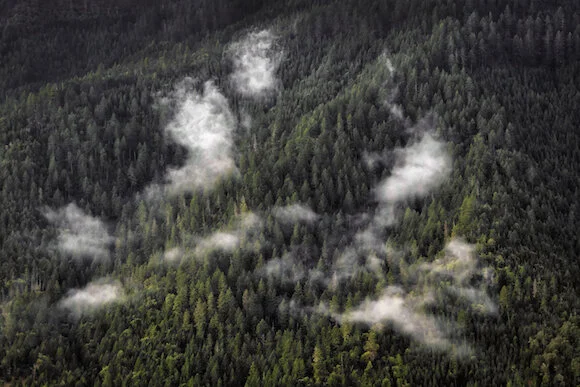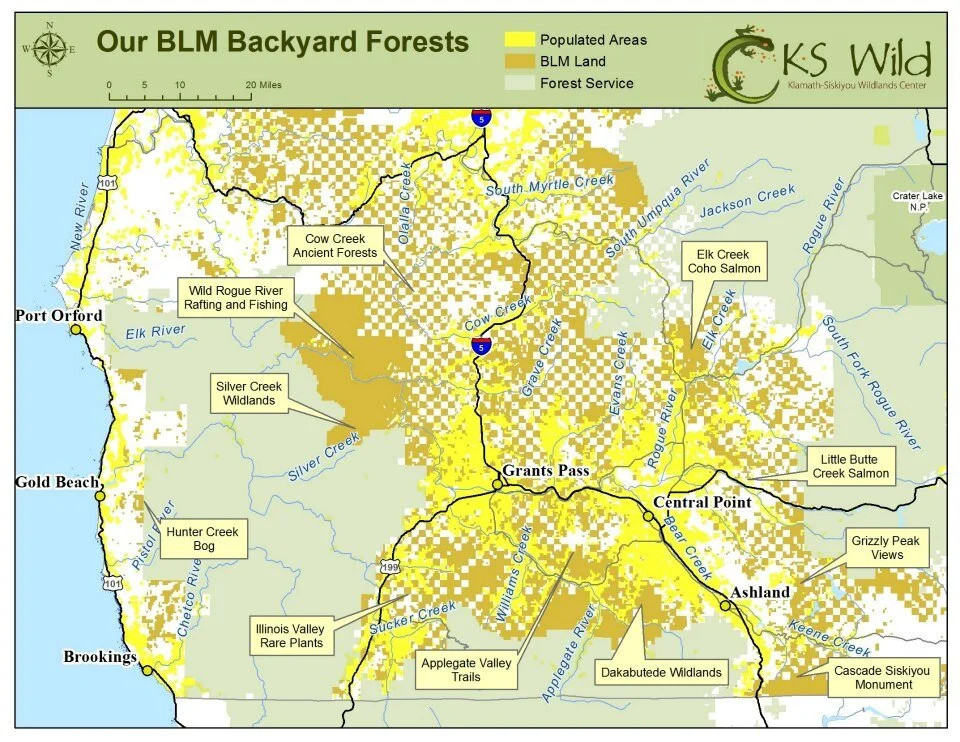With excitement, we announce our official success against the Medford BLM’s Integrated Vegetation Management project with the final adoption of Judge Clarke’s Findings & Rulings! Learn more about IVM and our success here.
Read MoreThe Medford Bureau of Land Management’s (BLM) clearcuts speak for themselves—and it's not a pretty story. Following the Rum Creek fire just upslope of the Wild & Scenic Rogue River outside of Galice, OR, the BLM engaged in extensive post-fire roadside clearcutting. Watch videos from the field report here.
Read MoreKS Wild is known for holding federal land managers accountable and challenging timber sales that threaten harm to wildlife and watersheds, so it's a big deal when we give the BLM their flowers for doing the right thing…
Read MoreThe Medford District Bureau of Land Management's old-growth logging program is relentless and uncompromising. Currently, the 8,150-acre "Last Chance" timber sale calls for logging most of the remaining mature and old-growth forests in the foothills between Sunny Valley and Galesville. Click to learn more.
Read MoreDo you remember the BLM's Integrated Vegetation Management plan to log old-growth Late Successional Reserves like those located in the Late Mungers timber sale near Williams? After commenting, public meetings, field checking, and trying everything we could think of to get BLM to retain these old-growth forests, we finally will have our day in court, and you are invited to join us.
Read MoreLast week, I ventured into the field with George, our Conservation Director, to groundtruth a Medford District Bureau of Land Management (BLM) timber sale called Mill Rat within the Poor Windy project just north of Grants Pass, Oregon. What we found was heartbreaking. Click to read the full field report.
Read MoreThe Biden Administration has announced a federal rule for how the Bureau of Land Management’s (BLM) mission addresses the climate and biodiversity crises, attempting to re-balance BLM’s multi-use mandate for managing public lands, which for decades has favored resource extraction over any other use.
Read MoreThe Medford District of the Bureau of Land Management (BLM) continues to propose timber sales and contend they are retaining (rather than logging) old-growth, and conservation organizations and the BLM’s neighbors will argue that the BLM is in fact logging old-growth. So, who is right and what’s behind the conflicting claims?
Read MoreDo you remember the BLM's Integrated Vegetation Management plan to log old-growth Late Successional Reserves like those located in the Late Mungers timber sale near Williams? After commenting, public meetings, field checking, and trying everything we could think of to get BLM to retain these old-growth forests, we finally will have our day in court, and you are invited to join us.
Read MoreFollowing years of public concern and successful op eds and appeals, the Bear Grub timber sale is canceled (again)! Read more about the decision here.
Read MoreThe Medford District BLM Poor Windy Timber Sale allows logging on more than 15,000 acres, including cutting down 4,573 acres of mature and old-growth trees.
Read MoreFederal agencies such as the Forest Service and the Bureau of Land Management are legally required to consider public opinion. When you or your community join the decision-making process through contributing substantive public comments, you have the opportunity to influence the actions of the agency involved. Learn how to make comments on federal projects in this blog.
Read MoreThe US Forest Service and Bureau of Land Management (BLM) released the first ever national inventory of mature and old-growth forests. Want to know what this all means for the protection of forests in the Pacific Northwest?
Read MoreSome timber advocates within the Bureau of Land Management (BLM) simply cannot abide the idea that there are old-growth forests designated as protected on public lands, so they’ve designed a new program called “Integrated Vegetation Management” to target Late Successional Reserves for logging. Learn more about the IVM project in this blog.
Read MoreThe Bear Grub timber sale is back, and rather than working with the public to reduce the impacts of the proposed "group selection" logging on wildlife, watersheds and wildlands, the BLM is once again targeting ancient forests in the "harvest land base" for "group selection. Take action today to let the BLM know you oppose the Bear Grub timber sale!
Read More"Integrated Vegetation Management for Resilient Lands" (IVM) sure sounds great doesn't it? Unfortunately, those flowery words are agency-speak for logging old-growth forest reserves down to 30% canopy cover and creating four-acre mini-clearcuts across the landscape in southwestern Oregon.
Read MoreMuch of the Bear Grub timber sale is located in the so-called “harvest land base” where the BLM has directed itself to log regardless of the impacts to neighbors, wildlife, or watersheds.
Read MoreIn late November 2019, a Washington D.C. judge ruled that 2.5 million acres of public forests managed by BLM in western Oregon have a timber-first mandate. If this ruling is upheld, the fate of these public lands will include more ancient forests turned to stump fields, at the expense of our climate, our communities, and our water security.
Read MoreFor the second talk in KS Wild’s Summer Speaker Series on Fire Management, Dr. Christopher J. Dunn focused on five key things we need to remember in our fire-prone landscape, and a new method derived from his research that may alter how we fight fires in the future.
Read MoreWhen the BLM uses taxpayer dollars to plan controversial public lands logging projects, like the Pickett West native forest timber sale, you have a right to know what they are up to. Transparent public lands management is at the heart of how government is supposed to function in our Democracy.
Read More


